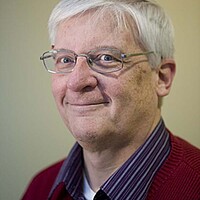Eyes on the Seas guards the oceans from above
Loading...
Right now this is a fish story that ends with a disturbing statistic: About 1 in 5 fish landed each year around the world is probably caught illegally. That’s roughly $23.5 billion worth of seafood.
But Tony Long wants to write a new story, one in which information collected for government officials allows them to identify unlawful activities in the world’s oceans, thus encouraging fishermen to observe the rule of law.
The former British Royal Navy commander heads Project Eyes on the Seas, a joint effort of the Pew Charitable Trusts and Satellite Applications Catapult, a nonprofit group backed by the British government. Eyes on the Seas uses satellite monitoring and imagery, combined with other data it collects, to detect possibly illegal fishing activity around the world.
If suspicious activities are detected, information about the vessel’s location, and sometimes even its identity, is passed on to a government or other authorities for possible action.
But catching bad guys isn’t the principal purpose of Eyes on the Seas, says Mr. Long, who spent much of his 27-year naval career commanding ships at sea from the North Atlantic to the Persian Gulf. He’s also earned a master’s degree in defense studies from King’s College London.
Eyes on the Seas “shouldn’t be looked at as solely an enforcement tool,” he says in a recent telephone interview. Transparency also aids those who are trying to play by the rules.
Seafood suppliers can use the technology to monitor their supply chain, he says, and to provide evidence that they have been acting legally and responsibly. They can prove they trade with fishing vessels that are open about where and how they’ve fished, he says.
In the future, Eyes on the Seas may add more features, including a crowdsourcing element that would allow anyone to provide information. That “definitely would be valuable,” Long says.
The effort is being coordinated from a control center in Harwell, England, west of London. Some of the first assignments have been working with Britain (Pitcairn Islands), Chile (Easter Island), and Palau to monitor surrounding marine reserves. Eyes on the Seas is also working with seven African governments that have created FISH-i Africa (www.fish-i-africa.org), a data-sharing initiative aimed at ending illegal fishing off the southeast coast of that continent.
Aircraft and boats are already being used to monitor fishing grounds. But these methods can be both expensive and hit or miss. At the same time, data-collection via satellite has gotten better (satellites now can see through cloud cover, night and day) and cheaper. “We’re trying to keep this as low-cost as possible,” Long says.
These technological changes were behind the British government funding of Catapult, which helps businesses take advantage of data acquired by satellites.
Eyes on the Seas uses ID data emitted by ships themselves, which gives their identity and position to other nearby vessels. It also is developing a global database of fishing vessels, including information on their country of registration, ownership, ties to other vessels, and any known history of illegal fishing.
The system’s algorithm can detect if a vessel has stopped signaling its position or has moved into a marine reserve or other off-limits area – signs that a vessel might be fishing illegally.
When this occurs, automated alerts sound and determine if a violation is under way. Using this real-time information, governments can respond immediately. If they are unable to track down the possible offender, they can request help from the ship’s country of origin or alert regional fisheries management groups that could blacklist the vessel.








